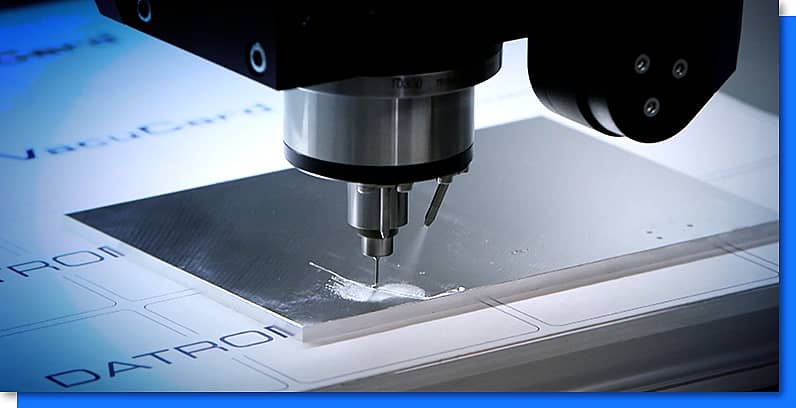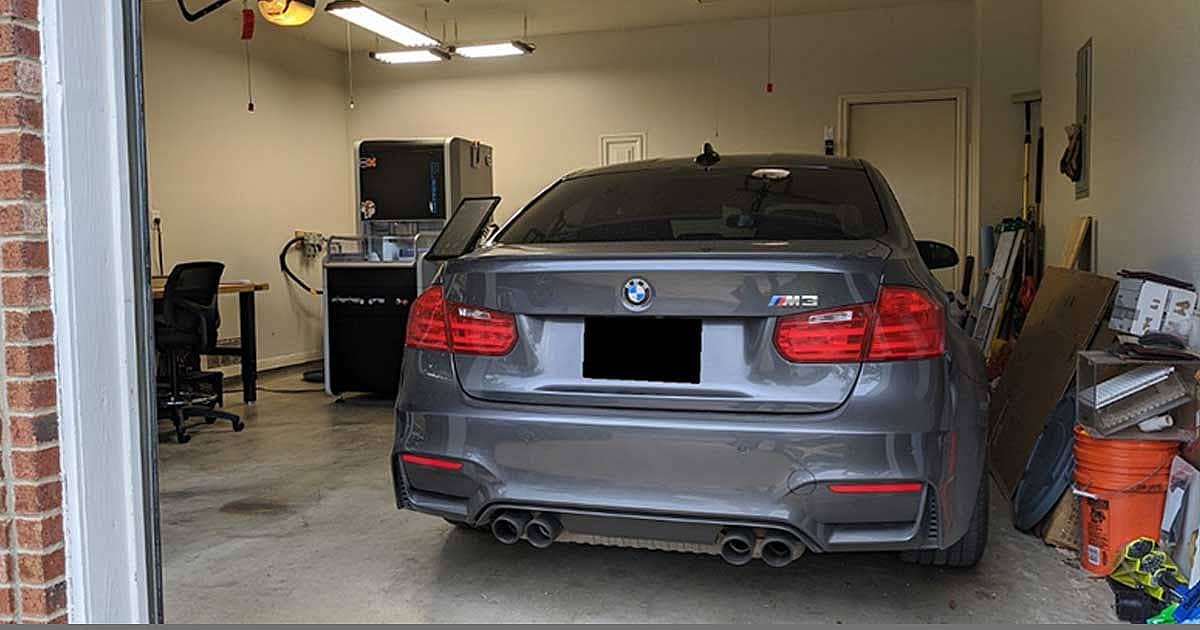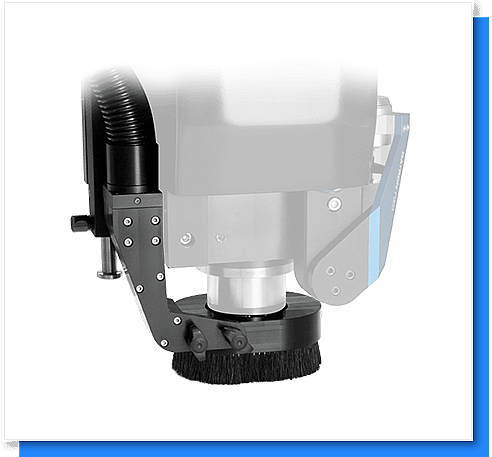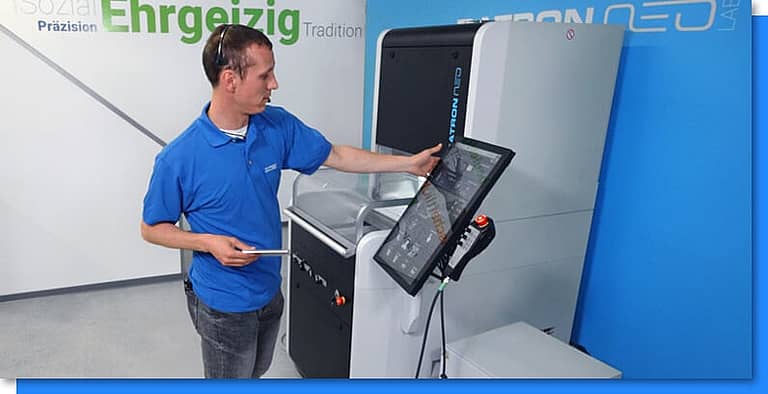
Prototyping in Tight Spaces – When A Big Machine Can’t Fit
For big companies and little guys alike, introducing prototyping or production capability is more important than ever. Whether it’s to avoid supply chain fiascos, or to protect your intellectual property, adding CNC milling to your shop is a big step in gaining manufacturing independence. But what if you just don’t have room for it? What if you are prototyping in tight spaces?
One creative solution for this manufacturing dilemma is to bring your CNC milling in-house… Literally speaking, in your house.
Let’s discuss how that idea is even possible by breaking down what makes a DATRON different, and study a customer’s story to validate the concept. Read on to find out how to put big CNC capability in the most unassuming spaces.
Precision Meets Practicality
From the ground up, DATRON has designed their machines with a core focus on simplification. This is evident in everything, from the next control’s painless interface, to the user-oriented ergonomics. But the real achievement lies in what is the user doesn’t have to deal with.
The efforts put into minimizing the setup and maintenance requirements are what set DATRON apart from every other CNC machine.
While there are plenty of machines that are fast and accurate, none are more practical to live with than a DATRON. Here’s the 5 ways this is achieved:
1. Compact Footprint
When space is at a premium, machine footprint is arguably the most important consideration. The portal design of all DATRON machines ensures a large work envelope and a small machine footprint, especially when compared to typical VMC offerings. How many industrial CNC machines can you find that fit through a standard doorway?

2. Minimal Height
Having a compact footprint is important when putting a machine in a tight space, but don’t forget the height. Typical VMC construction is quite tall, with tool changers and Z axis protruding from the top of the enclosure. This can pose a considerable dilemma when fitting a machine through your door, and depending on ceiling height, it may not be operable once it’s in place. The construction on a DATRON is entirely self-enclosed, and compact, so height restriction will likely never be an issue.
3. Spray Mist Coolant System
Flood coolant systems are certainly effective, but they are undoubtedly inconvenient. Using a flood coolant system requires a significant amount of up-keep, and if it’s not well maintained, don’t be surprised when the system foams over and floods your shop floor. Not to mention, they produce an odor and fine mist that needs to be either tolerated or collected with additional accessories.
DATRON only uses mist cooling systems, typically with evaporative coolants, to provide the lowest maintenance, and clean, exceptional results.
4. Single Phase Power
Power requirements can be a big hurdle to overcome when putting a machine in a residential setting. Typical industrial equipment needs 3 phase power, sometimes in excess of 480 volts. While the electrical company might be able to hook this up for you, expect it to take a lot of time and cost a small fortune. The alternative becomes using an expensive and noisy phase converter to supply the correct power. Luckily, the DATRON neo is now available with single phase power capability, so you can hook up to the same outlet an electric dryer or oven would use and avoid the logistical nightmare.
5. Minimal Noise Pollution
Unless you are OK with your neighbors uninviting you from their barbecue cookout, you’re going to want to keep your CNC mill muted. This is difficult to avoid with a typical VMC, with a variety of noisy auxiliary equipment and cutting tools, it’s hard to work on one without ear protection for yourself, never mind your neighbor.
Fortunately, this is a whole different story with a DATRON – with high RPM spindles, optimized cutting tools, and quiet accessories, it’s a machine that’s easy on the ears. To put it in perspective, a neo will typically run in the low 60 decibel range, about as loud as a conversation, but may get as loud as high 60’s, or as loud as a vacuum cleaner. It’s not uncommon for new DATRON users to be unsure if the machine is even running. Good news: your neighbors would like you to bring your famous pasta salad.
Sharing Space with a BMW
For the perfect example of putting manufacturing prowess in an unsuspecting location, look no further than Ed Kramer, founder and operator at EFK3 Ventures, LLC.
Hailing from the San Antonio, TX area, Ed is a retired Enterprise Software Architect who has grown his hobby into a full-blown business. Ed’s fascination with machining went way back.
“Ever since I was a young guy I was kinda into cars and mechanics as a teenager, that kind of evolved into computers… ”.
Ed took his mechanical inclination, combined it with his computer skills, and poured it into his CNC hobby. Starting off with 3 and 5 axis desktop mills, he grew his skills in CNC milling, as well as CAD/CAM in Fusion360. To log his journey in machining, Ed documented his trials over social media, growing an audience along the way.
It wasn’t long before Ed was taking on small contract manufacturing work, developing unique prototypes and performing short run production work for clients that found him through Instagram. However, he was reaching the limits of what his desktop machines could produce, and found himself turning away work due to tight tolerances or large quantities.
Ed made room for expansion, giving up his BMW’s spot in his 2-car garage for a new CNC mill. He started shopping for machines with the space restriction in mind, as well as particular criteria for capability. Having already used DATRON cutting tools to boost the performance of his desktop mills, Ed decided to take a closer look at the DATRON neo.
Speaking on his podcast, The Digital Fabrication Experiment, Ed explains why he picked the neo.
“after an 18 month long search and looking at a lot of machines… weighing them against the constraints that I have here around the amount of current I have available at the house and the amount of real estate I have in the garage… I was looking for like, what’s the machine I can get with the smallest physical footprint on the floor and the biggest work area… the neo is almost perfect for the kind of work I want to do on it.”
Besides the advantages on paper, Ed had already experienced DATRON’s support as a tooling customer and could sleep well knowing a good team would be backing him up. With that confidence supporting him, he moved forward with the acquisition of the neo – as well as the auxiliary equipment needed to support it.

Setting the Stage for CNC
Before pulling the trigger on a CNC machine for your space, it’s important to look at what support systems you’ll need in place first. Without the proper infrastructure considerations, the best CNC machine can be reduced to dead weight. Here are 4 points to consider:
1. Compressed Air
A universal requirement amongst all industrial CNC machines, compressed air is required for pneumatic components, protective air purging for the spindle, and minimum quantity lubrication systems.
When choosing an air compressor, your first priority should be meeting the pressure and flow requirements of the equipment you’re running.
Once that is met, you’ll want to consider other factors, like duty cycle (ability to be run for long periods), noise levels, and service requirements. Whichever system you choose, make certain to have a capable air drier / filtration system in place. Water and contaminants in your air system can cause extensive damage to your CNC machine, so it’s worth the up-front cost protect your investment.
2. Thermal Management
“Is it hot in here?” If you’re asking this question after setting up your CNC lab, you may not have considered the thermal factor. When you add it all up, the heat coming from a CNC machine, an air compressor, a vacuum pump, and any additional equipment, can be immense. Take all of it into consideration when you are building your shop – for the long-term conditions of your equipment, but more importantly – you.
3. Air Circulation
Besides air conditioning, take air quality into consideration. CNC mills introduce airborne particulates, either from coolant systems, or dust generated from cutting. For coolant vapors, installing an air exchanger is an effective way of bringing fresh air into your space without sacrificing cooling/heating. If the material you are working with is particularly dusty, like carbon fiber, PCB or wood, a dust extraction head and vacuum system with HEPA filtration is the best choice for clean air.

4. Power Requirements
As previously mentioned, single phase power capability is a big deal for shops without access to 3 phase power, but that’s only half the equation, the other half being the current supply. Working with your power company and a certified electrician, look into how much current your service supplies, as well as how much is currently used. You’ll want to have enough for the CNC’s maximum load, plus all auxiliary equipment, like vacuums, compressors, and air conditioners. Add a safety buffer in to avoid accidental overloads from power tools and other accessories.
With advanced technology available in such a practical format, now is a better time than ever to reevaluate your prototyping or production needs. Hopefully this blog has given you the confidence that it’s time to onshore your manufacturing, (maybe even in your garage).





